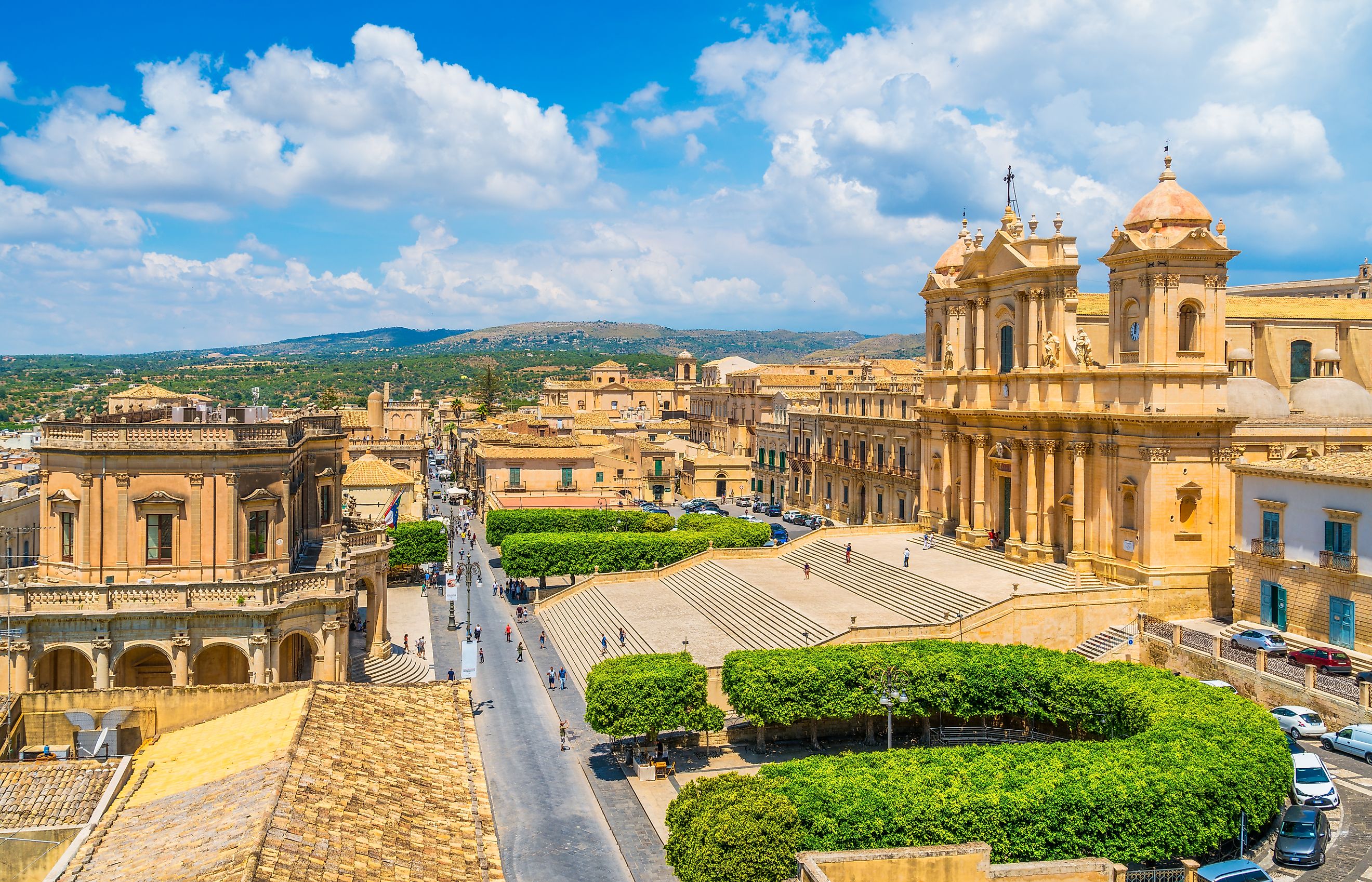
6 Of The Quirkiest Towns In Italy
Nobody does “quirky” quite like the Italians. And it certainly helps that they’ve had over 3,000 years of practice. With roots that go way back to 753 BC and the founding of the Roman Empire, Italy has so much history to experience that a visitor couldn’t possibly even scratch the surface in a lifetime of visits to major travel destinations like Rome, Florence, or Venice.
Speaking from experience, I’d recommend that anyone seeking a true sense of this beautiful nation’s quirky past spend at least a little time exploring some of Italy’s lesser-known and quirkier towns. Not only do these communities stand out for their charm, they also boast distinct personalities that set them apart from typical Italian travel destinations. From eccentric festivals to unusual architectural wonders, these six of the quirkiest towns in Italy invite you to explore this popular European destination’s more unconventional side.
Civita di Bagnoregio
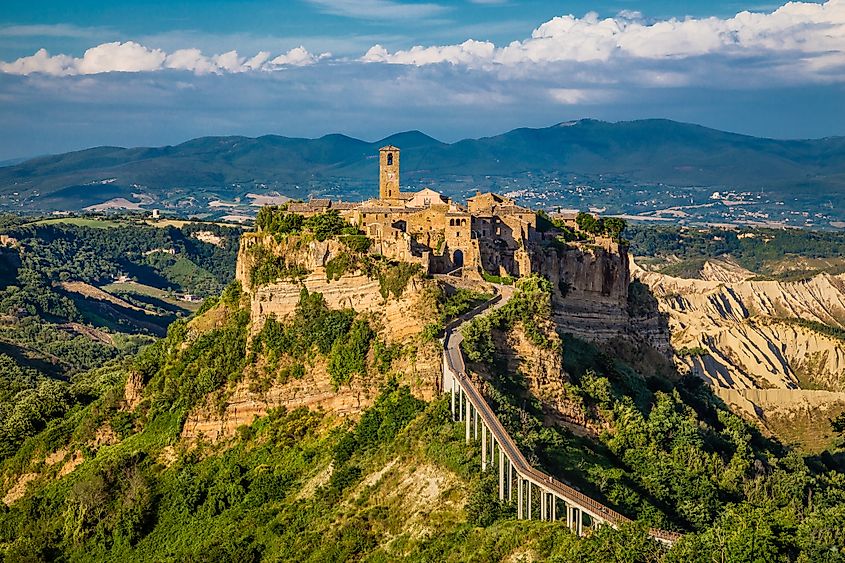
Perched on a crumbling plateau of volcanic rock two hours north of downtown Rome, Civita di Bagnoregio is often referred to as the “Dying Town” due to its gradually eroding foundations. Founded over 2,500 years ago by the pre-Roman-era Etruscans, the town’s unique appeal lies in its precarious position, accessible only by a pedestrian bridge that offers wonderful views of the surrounding valley. The town's quirky charm is amplified by its near abandonment, giving it the feel of a ghost town preserved in time.
Wander the medieval streets for a look at historic landmarks such as the 12th-century Church of San Donato, and visit the ancient Etruscan caves carved into the cliffside. One of the most unusual aspects of Civita di Bagnoregio is its annual festival, "La Tonna," a centuries-old donkey race held every June in the town’s main square. This eccentric event dates back to the 17th century and attracts both locals and tourists who gather to watch the donkeys race around the square, an event that feels as ancient as the town itself.
Alberobello
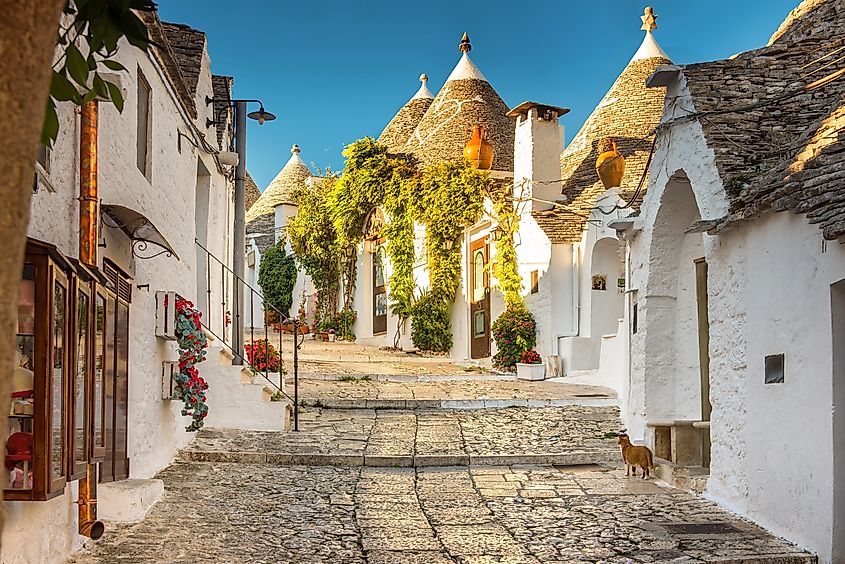
Located in the south of the country mid-way between the cities of Bari and Taranto, Alberobello is famous for its iconic “trulli” houses, unique conical-roofed structures that dominate the town’s skyline. These quirky triangular buildings look like something straight out of a fairy tale and were constructed in this style in the 14th century using dry stone construction techniques in order to avoid taxation. Alberobello’s trulli are so unique that they’ve earned the town a place on the UNESCO World Heritage list and are the main attraction for visitors. Start your tour of the town’s quirky Rione Monti district, where hundreds of these whitewashed trulli line the narrow streets.
You can also explore the Trullo Sovrano, the town’s largest trullo which has been converted into an interesting museum showcasing the history and culture of the area. However, Alberobello’s quirkiness doesn’t end with its architecture. The town hosts an International Folk Festival each summer with much of the attention focused on these remarkable structures with spectacular light shows transforming them into spectacular canvases of colors.
Matera
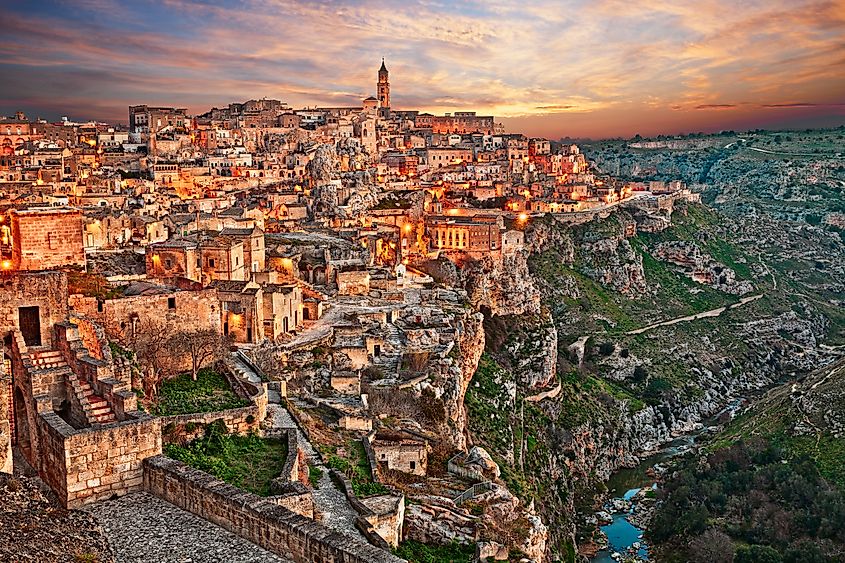
Matera is another town in southern Italy that’s worth checking out for its unusual setting. Here, the quirk factor boils down to the community’s ancient cave dwellings. Known as “Sassi,” these remarkable troglodyte homes (the fancy name for cave dwellings!) are carved into the cliffs of a deep ravine, some of them still inhabited after thousands of years. It’s an incredible place to explore with its labyrinthine network of streets, staircases, and tunnels that seem to blend seamlessly with the natural landscape and was even used as a backdrop for Mel Gibson’s The Passion of the Christ.
Matera’s unique architecture and history have earned it a designation as a UNESCO World Heritage site, and it was even named a European Capital of Culture in 2019. Top things to do in Matera include exploring the fascinating Sassi districts, where many of the cave homes have been restored and converted into museums, restaurants, and even hotels. Visit in July for the chance to participate in the Festa della Bruna, a chaotic and quirky festival that culminates in the destruction of a massive papier-mâché float, a tradition that has been carried on for centuries.
Burano
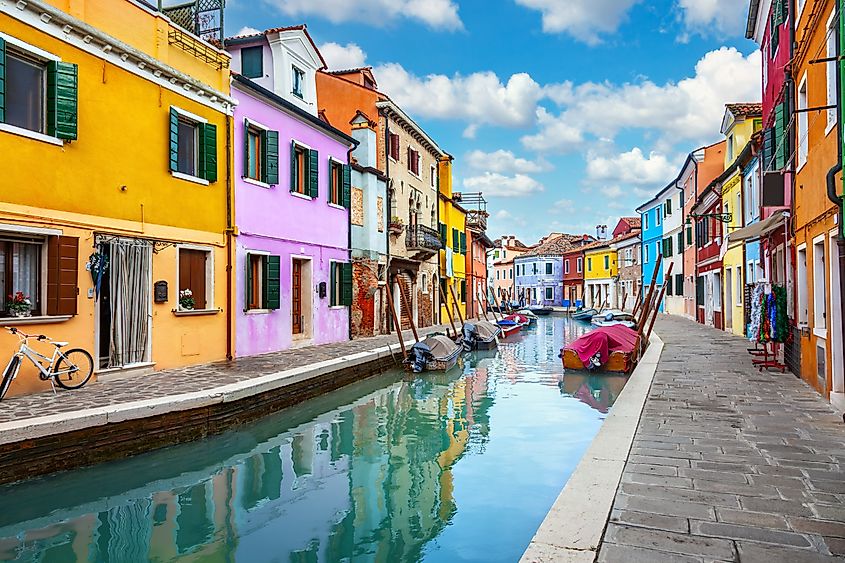
Visiting Venice? Then Burano, a small island town in the Venetian Lagoon, is a fun side trip to include in your Venetian travel itinerary. This fascinating destination is famous for its brightly painted houses lining the canals, creating a rainbow of colors that attract photographers and visitors for memorable holiday snaps and bucket list selfies. This quirky tradition of painting houses in vibrant colors, in fact, dates back centuries and is said to have helped fishermen find their way home in dense fog.
Burano is also famous for its lace-making tradition, a part of its unique cultural heritage for over 500 years. You can learn more about the history of lace making at the Museo del Merletto (Lace Museum) with its exhibits about this intricate art that has been passed down through generations. It’s also not without a few quirky events worth checking out, too. Topping our list is the annual Festa della Sensa, a historic celebration of Venice’s marriage to the sea, which includes a symbolic ceremony and regattas.
Noto
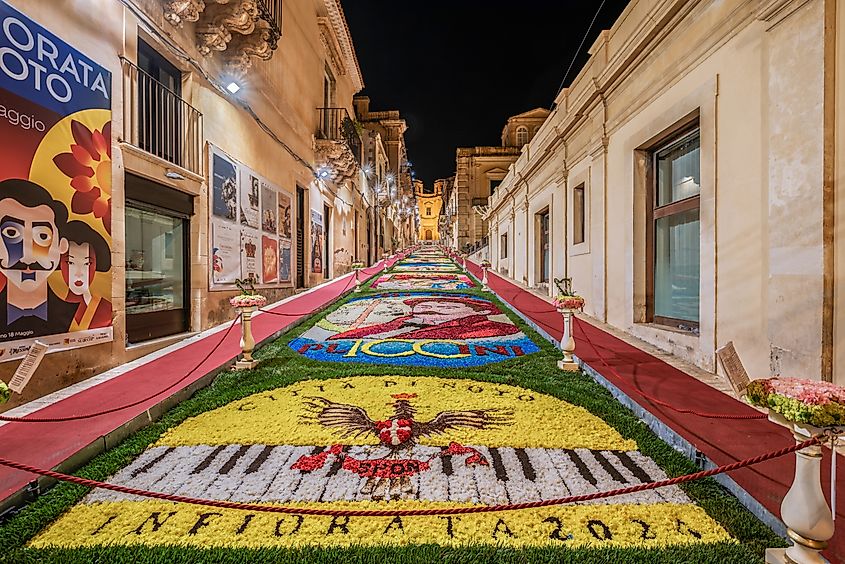
Down on the island of Sicily, Noto is often referred to as the “Baroque Capital” of Italy for the sheer extravagance of its magnificent architecture. After a devastating earthquake in 1693, the town was completely rebuilt in classic Baroque style, resulting in a stunning ensemble of palaces, churches, and public buildings, all constructed from local golden limestone. The town’s grandeur is evident in every corner, from the opulent façades of the Cathedral of San Nicolò to the intricate details of the Palazzo Ducezio.
What makes Noto quirky is its devotion to this artistic style, something it celebrates every May during the Infiorata di Noto. Also dubbed the “Baroque Spring,” this colorful festival sees Noto’s streets transformed into a literal floral carpet with elaborate designs made entirely of petals. Dating back to the 1980s, this must-do event attracts visitors from all over the world who come to witness the spectacular displays.
Orvieto
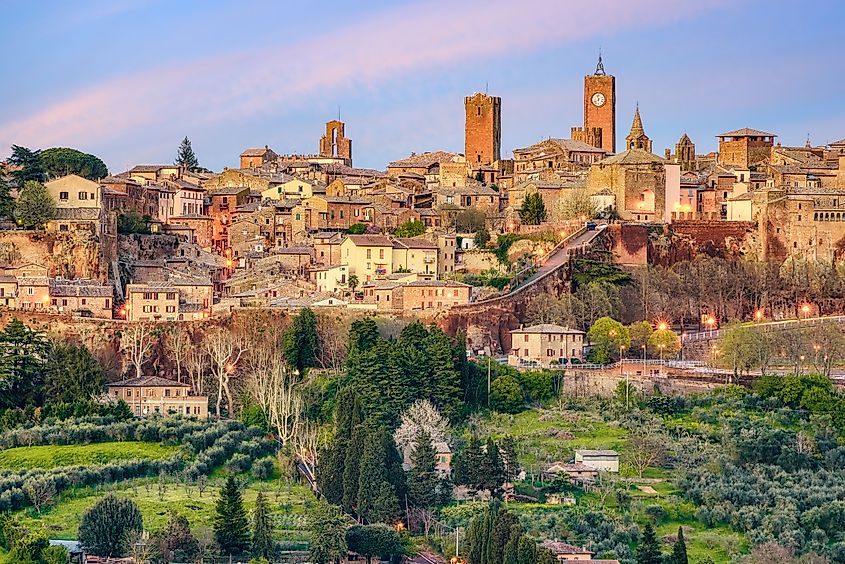
Orvieto is another town that’s easy to get to from Rome and offers visitors the chance to experience the quirkier side of Italy. Perched dramatically atop a volcanic plateau, its most famous landmark, the Orvieto Cathedral, is visible from miles away. This Gothic masterpiece, with its intricate façade adorned with mosaics, sculptures, and carvings, is widely regarded as one of Italy’s most impressive cathedrals and can (and should be) be toured.
Orvieto’s quirkiest attraction, however, lies beneath the surface as the town is honeycombed with a network of fascinating underground tunnels and caves, some dating back to pre-Roman times. Used for everything from storage to secret escapes, you can enjoy guided tours of this incredible underground city, exploring ancient wells, cisterns, and even a medieval olive press along the way. Another fun thing to do here is to visit the Palio dell’Oca, a quirky medieval festival held each September that includes a goose race in the town square, among other quirky happenings.
The Final Word
There’s no denying that Italy leads the field in the “quirky places to visit in Europe” stakes. And while major tourist destinations such as Rome and Tuscany are well-known and often visited, there are, in fact, no end of equally deserving (and equally quirky) small towns to discover. Each of these lovely towns, with its distinct attractions and offbeat charm, invites adventurous travelers to explore a side of Italy that’s all too often overlooked. From ancient festivals and unique architectural styles to vibrant traditions and hidden underground wonders, these six quirky towns in Italy present a fascinating blend of history, culture… and, yes, a healthy dose of whimsy.











